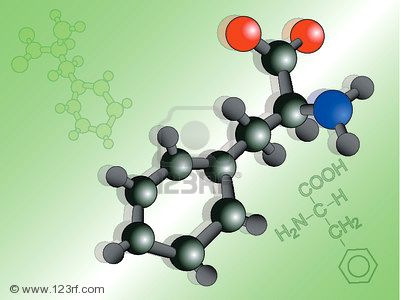
Your cell phone may one day be powered by a nanoprotein extracted from spinach. Leafy vegetables use photosynthesis to convert solar energy in order to grow, said Hongda Chen, a national program leader at National Institute of Food and Agriculture at the United States Department of Agriculture. By studying the plant’s Photosystem I, nanoscale protein researchers can create nanostructures that directly convert solar energy to electricity.
Researchers at Vanderbilt University in Nashville, Tenn., have developed a thin film prototype that can provide power enough to drive devices such as cell phones that uses solar energy. The research was funded by Washington, D.C.-based National Institute of Food and Agriculture. Mr. Chen said that “Agriculture can do a lot and provide the ability to solve many problems and nanotechnology is an exciting field”.
Nanotechnology in food can be applied for detection in food safety, diseases in crops and livestock. The institute has supported research projects on food safety such as improving the shelf life of food so there is less wasted food and in antimicrobial utensils and food processing surfaces that could prevent human illnesses. “Even though the research going on is not ready to reach into the commercial industry,” said Chen, “nanotechnology will have potential to revolutionize agricultural production and food industry” because the nanotechnology has some solutions to make agriculture more efficient.
With world population projected to reach 9 billion by 2050, the demands on food supply will increase. Nanotechnology can be used as sensors to timely monitor what crops need more water and nutrients so “The advantage is that we know how much is needed so we can deliver the right amount of fertilizer or pesticides and prevent over applying fertilizer and prevent run off and pollutants”.
Nanotechnology can help improve understanding of how water, fertilizers and pesticides interact with crops and deliver better nutrients creating less waste and protecting the environment, nanotechnology also can develop supplements to improve nutrient delivery to improve health components in milk, Chen said.
Rickey Yada, a University of Guelph food scientist who directs the Advanced Foods and Materials Network, a Canadian research network, where some of the research studies the development and potential applications of science and technology at the nanoscale in food said that: with food, nutrition and health on the minds of many consumers, given the increase in such diseases as obesity, type II diabetes and cardiovascular diseases, nanoscience and nanotechnology may offer some potential solutions.
“Researchers are attempting to develop ways to deliver nutrients into the body more rapidly and efficiently, thereby helping to reduce diseases such as cardiovascular disease and obesity or to maintain a healthy body”. Nanoscience is also being used to develop biosensors to enable early detection of potentially harmful compounds and pathogenic bacteria in food. As with any new technology, people debate the safety of using nanotechnology in the food and agriculture industry. Genetically modified technology identified the need to be more transparent and open as technology develops, Yada said.
“As nanoscience and technology develops and potential applications are identified, it will be important that lessons learned during the debate regarding the use and implementation of genetically modified organisms will be addressed,” Yada said. “Therefore, issues such as risk assessment, benefits, transparency and education will be critical to the successful use of this new science.”
Paul Thompson, a bioethicist at Michigan State University in East Lansing, Mich., looks at issues involving nanotech and its impact on society. As the principal investigator of a study on the social and ethical issues of nanotechnology in food and agriculture he said, “We came to conclusion there is relatively little going on in food and agriculture that is really new. Nanotechnology encompasses a lot of chemistry. Most things might be considered to be new, but it is really an extension of chemical agriculture.”
The size of molecules affects food and pesticide chemistry. A fair amount of chemistry is now at a smaller scale that doesn’t mean that it is safe. The fusion of information technology and sensoring technology will be able to monitor environmental hazard issues that go with nanotechnology in food and agriculture. Additives are put into food for lots of different reasons such as to alter taste or increase nutrition and this change in chemistry means researchers need to test for safety of the product again, said Thompson.
“We are looking at unexpected aspects and always looking at changes in environmental, social and ethical concerns.”



